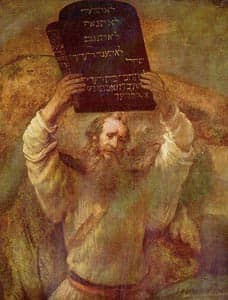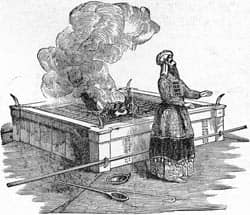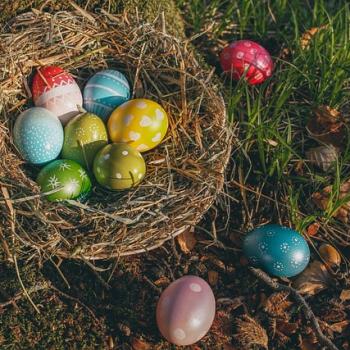By Talia Davis
 Beginning on Wednesday night, we celebrate the holiday of Sukkot. Sukkot lasts eight days, with the first two and the last two being considered holidays and the rest called Chol Hamoed (the intermediate days). Why the distinction? Because on chaggim (holidays) we have the same prohibitions about work as on Shabbat, which means no working or cell phones or driving or writing. Our chol hamoed days break it up for us.
Beginning on Wednesday night, we celebrate the holiday of Sukkot. Sukkot lasts eight days, with the first two and the last two being considered holidays and the rest called Chol Hamoed (the intermediate days). Why the distinction? Because on chaggim (holidays) we have the same prohibitions about work as on Shabbat, which means no working or cell phones or driving or writing. Our chol hamoed days break it up for us.
On the first days of Sukkot we read Vayikrah (Leviticus) 22:26-23:44 and Bamidbar (Numbers) 29:12-16. On the five chol hamoed days we read Bamidbar (Numbers) 29:17-34. In between these two, we have a Shabbat! On this Shabbat we read Shemot (Exodus) 33:12-34:26.
Sukkot ends with another holiday called Simchat Torah, which is where we start the Torah scroll again from the beginning. But I won’t overwhelm you with those details. Look for an article during chol hamoed about that. I know this seems like a lot of information but we will break it down here for you, and there is a great music video about Sukkot from our friends at G-dcast.com at the end!
First days of Chag (first two nights of the festival)
This is when we read Vayikrah (Leviticus) 22:26-23:44 and Bamidbar (Numbers) 29:12-16. The beginning of this section deals with G-d giving us our very important holidays. Shabbat is on the seventh day of the week. Passover lasts for seven days on the fourteenth day of the first month (the month is Nisan). Shavuot is to be fifty days after Passover. Then Rosh Hashanah is on the first day of the seventh month (Tishrei) with Yom Kippur on the tenth day of that month. Lastly, Sukkot is to last for eight days and begin on the fifteenth day of the seventh month (again, Tishrei).
A couple things to note here: Jewish months are always mentioned by number in the Torah. Never does it say “on the first day of Tishrei” but rather “on the first day of the seventh month.” Also, we know Rosh Hashanah as our Jewish new year when the year changes (from 5770 to 5771), but how can this happen on the seventh month of the year? Confusing, I know and frankly this isn’t the time to discuss it but in short, remember that we have four new years and Rosh Hashanah is just one of them. This is the anniversary of the creation of us! One other oddity that may have jumped out at you was the lack of holidays. There are only six festivals on that list! Well, that is accurate. We have our three actual festivals or chaggim -- Passover, Shavuot, and Sukkot --where we made our annual pilgrimage to the Holy Temple in Jerusalem. Otherwise, the other holidays we have are rabbinic holidays. Meaning? That means that after the Torah was written and given to us, events happened that our rabbis and sages felt we should commemorate and so we have added holidays but the only true festivals are these three.
The next small chunk comes from Bamidbar. This bit talks purely about Sukkot. It gives us some instructions about how to celebrate. We aren’t supposed to work but are to bring sacrifices (when we have a Holy Temple).
 Shabbat on Chol Hamoed (the first Sabbath of the festival)
Shabbat on Chol Hamoed (the first Sabbath of the festival)
For this Shabbat we will read Shemot (Exodus) 33:12-34:26. This is part of the Ki Tisa Torah portion. This part deals with Moses and G-d having a conversation about G-d leading the Jewish people. Moses asks to see G-d’s face but G-d declines, reminding Moses that no human could see G-d. But Moses was a little saddened so G-d has Moses stand by a rock and he gets a little peek at G-d’s backside. Essentially, Moses saw G-d’s tush and back. G-d then instructs Moses to write down some ideas and this became the Ten Commandments. I am sure you are all picturing two grey stone tablets held by Charlton Heston but that is not actually what they looked like. In fact, they were two cubes made from a green precious stone with the words inscribed inside. I am sure that was a sight to behold!
Then G-d admonished Moses that the Israelites shouldn’t make for themselves any sort of idol; they should honor the Sabbath along with celebrating the three pilgrimage chaggim (festivals).
 Chol Hamoed days (the days after the Sabbath but before the last two days of the festival)
Chol Hamoed days (the days after the Sabbath but before the last two days of the festival)
So on the five intermediate days of the holiday we read Bamidbar (Numbers) 29:17-34. This section describes the offerings we were to bring on each day of the holiday. It starts on the second day and goes to the seventh day. We read four aliyot (segments where someone is called to the Torah) each day and there is some math for that wherein we repeat segments. I know, I know, too much detail! Sorry.





